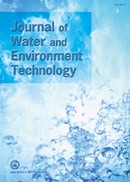Volume 1, Issue 2
Korea-Japan Symposium '03 (No. 3 & 4 combined)
Displaying 1-13 of 13 articles from this issue
- |<
- <
- 1
- >
- >|
Original Paper
-
2003Volume 1Issue 2 Pages 133-140
Published: 2003
Released on J-STAGE: April 13, 2004
Download PDF (320K) -
2003Volume 1Issue 2 Pages 141-153
Published: 2003
Released on J-STAGE: April 13, 2004
Download PDF (316K) -
2003Volume 1Issue 2 Pages 155-161
Published: 2003
Released on J-STAGE: April 13, 2004
Download PDF (276K) -
2003Volume 1Issue 2 Pages 163-175
Published: 2003
Released on J-STAGE: April 13, 2004
Download PDF (313K) -
2003Volume 1Issue 2 Pages 177-187
Published: 2003
Released on J-STAGE: April 13, 2004
Download PDF (231K) -
2003Volume 1Issue 2 Pages 189-202
Published: 2003
Released on J-STAGE: April 13, 2004
Download PDF (325K) -
2003Volume 1Issue 2 Pages 203-208
Published: 2003
Released on J-STAGE: April 13, 2004
Download PDF (292K) -
2003Volume 1Issue 2 Pages 209-216
Published: 2003
Released on J-STAGE: April 13, 2004
Download PDF (241K) -
2003Volume 1Issue 2 Pages 217-224
Published: 2003
Released on J-STAGE: April 13, 2004
Download PDF (178K) -
2003Volume 1Issue 2 Pages 225-232
Published: 2003
Released on J-STAGE: April 13, 2004
Download PDF (187K) -
2003Volume 1Issue 2 Pages 233-238
Published: 2003
Released on J-STAGE: April 13, 2004
Download PDF (244K) -
2003Volume 1Issue 2 Pages 239-246
Published: 2003
Released on J-STAGE: April 13, 2004
Download PDF (438K) -
2003Volume 1Issue 2 Pages 247-256
Published: 2003
Released on J-STAGE: April 13, 2004
Download PDF (248K)
- |<
- <
- 1
- >
- >|
